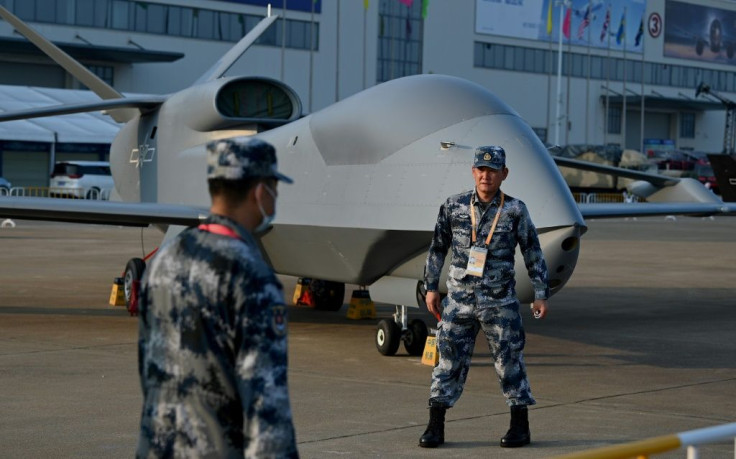China Sends Surveillance Drone Close To Japanese Islands In East China Sea
KEY POINTS
- The drone flew near Okinawa and other outlying Japanese islands
- Tokyo announced plans to deploy a surface-to-air missile defense unit on Yonaguni island
- China used WZ-7 in Tibet to carry out surveillance missions over the border with India
Amid rising tensions in the Indo-Pacific region, Chinese WZ-7 surveillance drones appeared for the first time over the East China Sea close to Japanese islands two days in a row, prompting Tokyo to scramble fighter jets on both occasions.
The drone flight on Sunday and Monday could be linked to the recent movement of the Chinese aircraft carrier Liaoning along with its task force, as per a report by The War Zone. The Liaoning Carrier Strike Group (CSG) is operating in the East China Sea after two weeks of deployment in the Philippine Sea, USNI News reported.
According to the Japanese Ministry of Defense (MoD), a single WZ-7—also known as "Soaring Dragon"—was active in the East China Sea as part of a mission that lasted from the morning to the afternoon, local time.
The drone reportedly took an identical flight path on both days. After appearing over the East China Sea, it flew towards the Philippine Sea, passing through the Miyako Strait which separates Japan's main island of Okinawa from the Miyako Islands. The drone then flew south of Japan's Sakishima Islands, further to the west, before reversing its course and heading back to the main island of Okinawa.
Significantly, further west of Sakishima Islands lies the island of Yonaguni located just off the east coast of Taiwan. As reported on Thursday, Tokyo has announced plans to deploy a surface-to-air missile defense unit on Yonaguni making the region particularly interesting for Beijing.
中国軍機の動向について(WZー7)https://t.co/G6Go81IBwr pic.twitter.com/DUu8oyM7Rf
— 防衛省統合幕僚監部 (@jointstaffpa) January 1, 2023
中国軍機の動向についてhttps://t.co/5yvcK4IcoD pic.twitter.com/bPuPqt0ifa
— 防衛省統合幕僚監部 (@jointstaffpa) January 2, 2023
Although the drone flew near Okinawa and other outlying Japanese islands, it is unclear how close it came to Japanese territory or exclusive economic zone. The War Zone reported that there is no indication that the WZ-7 deviated from international airspace.
With an operational range of 4,350 miles and flying endurance of 10 hours, the WZ-7 is capable of generating targeting information to carry out long-range missile strikes, which suits China's strategic goal of anti-access/area denial warfare in the Indo-Pacific region.
Loosely similar to the U.S. RQ-4 Global Hawk, the WZ-7 is one of China's most advanced operational AI-enabled drones with electronic warfare (EW) capabilities used for intelligence gathering, reconnaissance, and surveillance purposes.
The WZ-7 has been notably used by China in Tibet to carry out surveillance missions over the border with India. However, the War Zone adds that the drone has also been flown from the highly strategic Yishuntun Airbase close to the North Korean border.

© Copyright IBTimes 2024. All rights reserved.






















